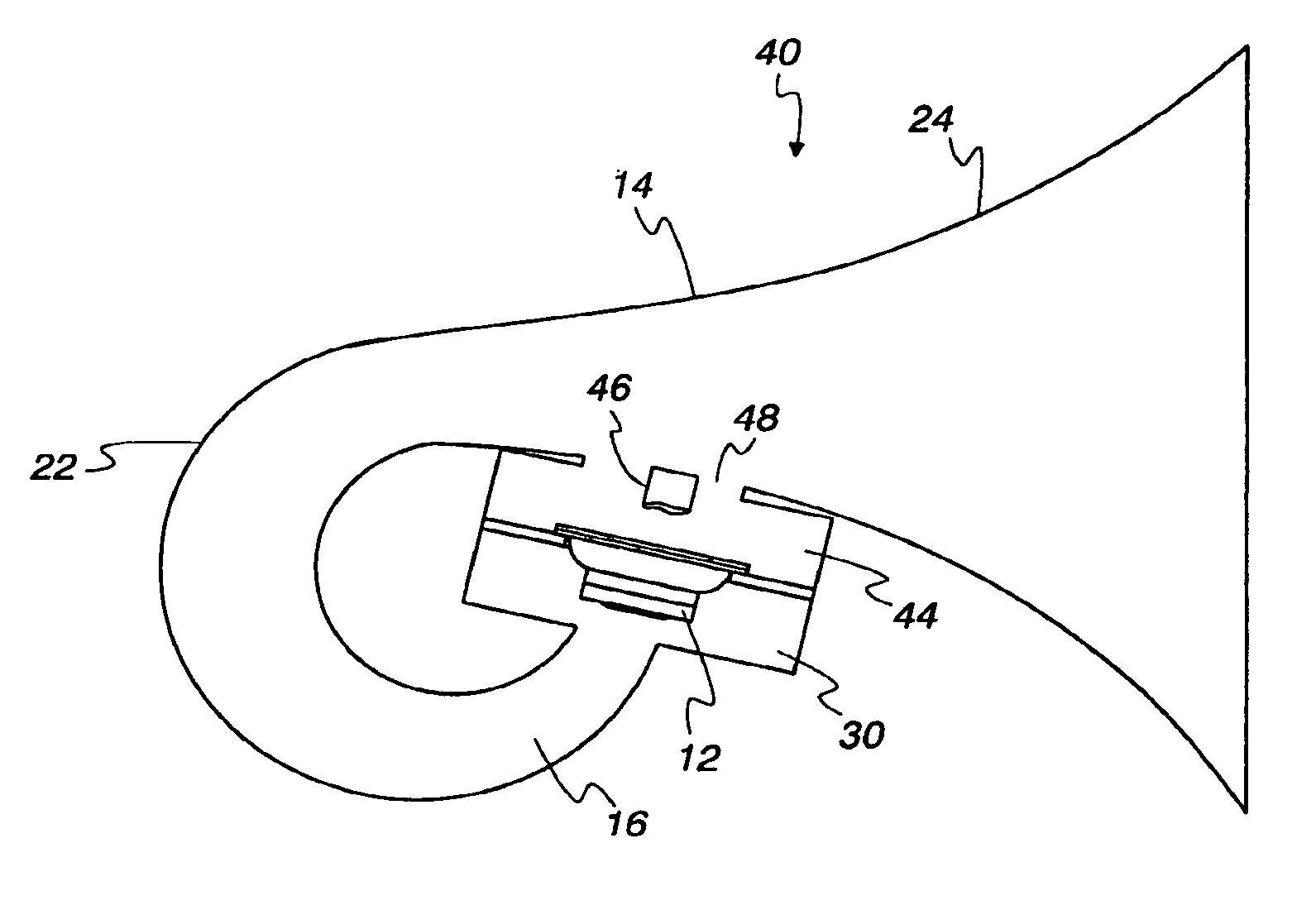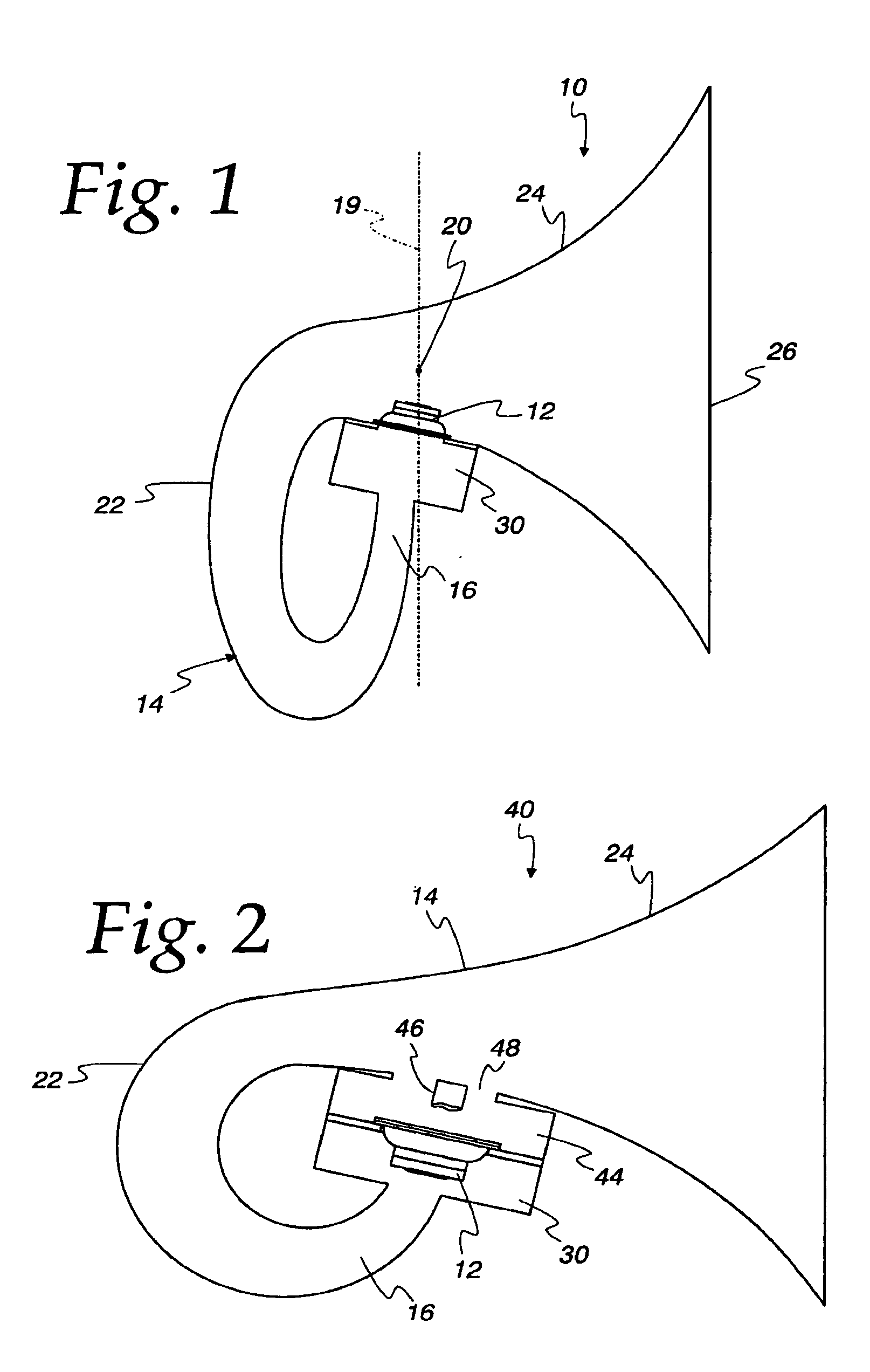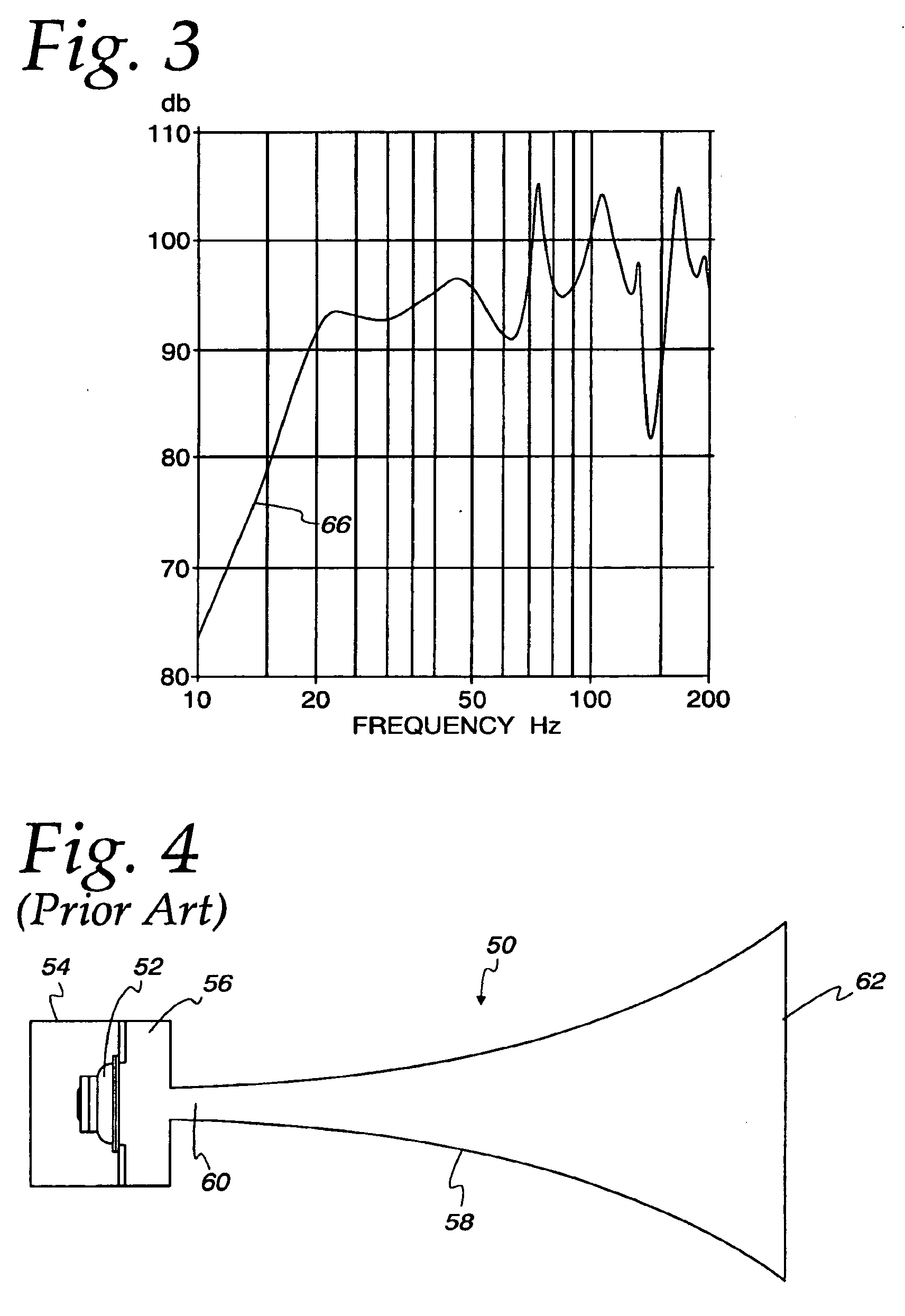Sound Reproduction With Improved Low Frequency Characteristics
- Summary
- Abstract
- Description
- Claims
- Application Information
AI Technical Summary
Benefits of technology
Problems solved by technology
Method used
Image
Examples
Embodiment Construction
[0019]The invention disclosed herein is, of course, susceptible of embodiment in many different forms. Shown in the drawings and described herein below in detail are the preferred embodiments of the invention. It is to be understood, however, that the present disclosure is an exemplification of the principles of the invention and does not limit the invention to the illustrated embodiments.
[0020]For ease of description, sound reproduction systems embodying the present invention are described herein below in their usual assembled position as shown in the accompanying drawings and terms such as front, rear, upper, lower, horizontal, longitudinal, etc., may be used herein with reference to this usual position. However, the sound reproduction systems may be manufactured, transported, sold, or used in orientations other than that described and shown herein.
[0021]At the outset it is noted that, while many different types of sound reproduction systems can receive substantial benefit from th...
PUM
 Login to View More
Login to View More Abstract
Description
Claims
Application Information
 Login to View More
Login to View More - R&D
- Intellectual Property
- Life Sciences
- Materials
- Tech Scout
- Unparalleled Data Quality
- Higher Quality Content
- 60% Fewer Hallucinations
Browse by: Latest US Patents, China's latest patents, Technical Efficacy Thesaurus, Application Domain, Technology Topic, Popular Technical Reports.
© 2025 PatSnap. All rights reserved.Legal|Privacy policy|Modern Slavery Act Transparency Statement|Sitemap|About US| Contact US: help@patsnap.com



